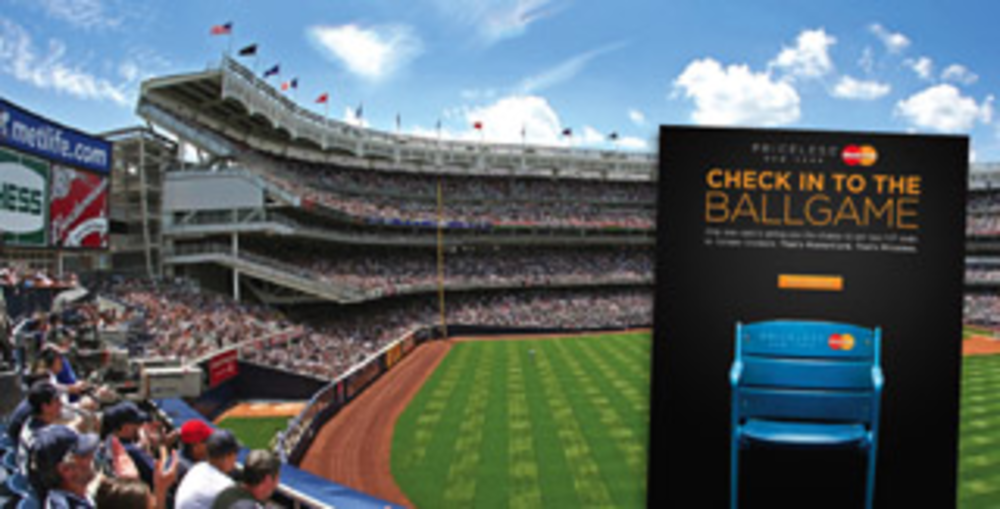Billboards and installations usually remain static. However, after credit card company MasterCard rolled out its “Priceless New York” campaign in July, it wasn’t the TV ads, the dedicated blog, the social media or online banner ads that were arguably the most direct digital components. It was the outdoor, or rather, out-of-home (OOH) campaign.?
For the “Check-in to the Ballgame” campaign that ran in August, MasterCard placed 20 seats from the old New York Yankees Stadium throughout New York City and asked consumers to check into those locations via ?Facebook Places, which then shares the campaign to consumers’ friends on the social network. Consumers could check in by scanning a quick response code with their mobile devices and were entered into a sweepstakes to win tickets to sit in MasterCard’s Batter’s Eye Café section at Yankees Stadium.?
“The digital aspect is hugely important because we want to make sure that when somebody sees the installation, they’re interacting,” says Julie Hogan, VP of consumer marketing at MasterCard Worldwide. “But the other piece of it is around the sharing and driving awareness that this program ?is going on.”?
Marketers such as cable network TNT and food chain Domino’s Pizza have also integrated digital with their outdoor campaigns to extend the campaign’s lifespan beyond a consumer chancing on one of the installments.?
“You can do an embellishment on a billboard and get someone’s attention for a split second, but what we try to do is actually engage the consumer to spend some time with the brand. That’s where all the digital elements come [in],” explains Josh Cohen, president and CEO of OOH media company Pearl Media, which worked with TNT on the network’s interactive storefront campaign to promote the season premiere of its crime series Rizzoli & Isles.?
TNT and Pearl Media transformed part of a New York City block into a crime scene and enabled consumers to connect the physical experience with their friends online. Consumers were encouraged to solve the crime by using a touch-screen display to dust for fingerprints, analyze DNA evidence, and even view an autopsy report. After the crime was solved, consumers could take a picture with augmented images of the show’s two main characters and share the photo to their Facebook wall via the interactive display.?
The installation was live throughout the month of July and “garnered thousands of interactions per week,” says Cohen. He adds that because the campaign was such an immersive experience that engaged consumers for minutes as opposed to seconds, it created a snowball effect that attracted more consumers than a static installation. ?
TNT made sure to capitalize on the effect. Not only did the digital incorporation make the out-of-home campaign measurable, but it layered in remarketing tools. The display featured an email opt-in form so that TNT could alert consumers when a new Rizzoli & Isles episode would air.?
Domino’s Pizza didn’t follow TNT’s example by using digital OOH as a lead generation tool, but the food chain did incorporate email with a Times Square billboard as a means to put its transparency policy on display and build brand loyalty. ?
Since early 2010, Domino’s Pizza has been promoting its openness to consumer criticisms. To further that aim, it took comments posted to the company’s online order tracker and began scrolling them across a 125-foot billboard in one of New York City’s most densely populated areas. Domino’s then sends an email to each consumer whose comment runs on the billboard with an image of the comment to ?cement the campaign’s authenticity. ?
“We want [consumers] to realize that we weren’t kidding,” says Chris Brandon, public relations manager at Domino’s. “We want them to understand that regardless of what they had to say, we posted it. It shows that we do respect feedback.”







